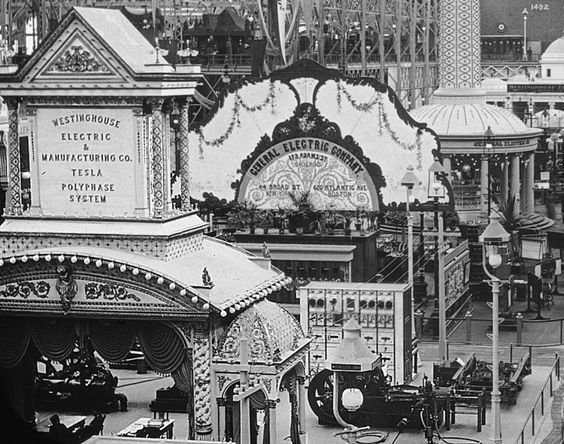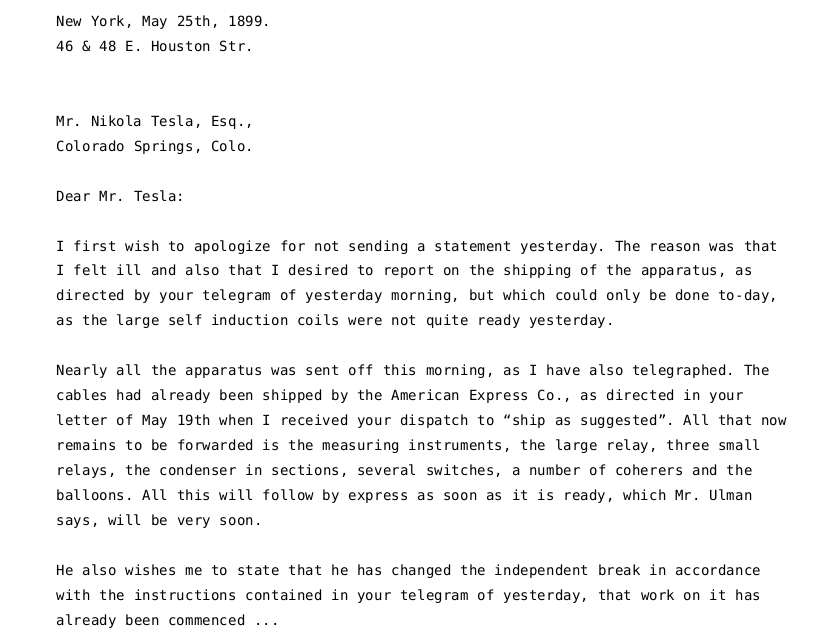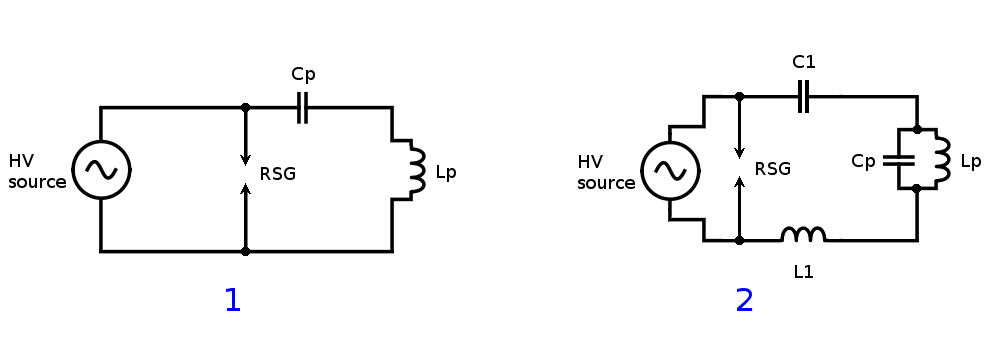We have a theory, a plan and we have -in our mind- constructed a machine to carry out that plan. Now it is time to put it to the test.
In case you have missed the earlier parts of this series, you can find them here
- part 1 – Intro,
- part 2 – Old science,
- part 3 – Electricity,
- part 4 – Gas law,
- part 5 – Self acting engine and
- part 6 – Magnifying Transmitter.

In the summer of 1893 Tesla gave a lecture before the Electrical Congress at the World's Fair in Chicago in which he demonstrated his advances in producing AC of constant high frequency. But I think nobody really understood the need for such machines until much later.
Just before the laboratory fire in 1895 Tesla managed to generate a million volts with a conical coil. This was about the maximum he could safely do within the city of New York.
After he rebuilt his laboratory he started doing tests with vacuum tubes, Lenard and x-rays to verify his theories.
On April 6th, 1897 Tesla gave a lecture before the New York Academy of Science to present his results in this area. With on display more than 200 different vacuum tubes that he designed.

Also during this time up until 1898 he worked on interrupters, which he called circuit controllers, that were meant to replace the spark-gap, as he figured that a lot of energy got wasted there. And he made some improvements to the way capacitors were made.
Then he packed his bags and moved to Colorado Springs to do the “real” tests away from prying eyes.
Various reasons, not the least of which was the help proffered by my friend Leonard E. Curtis and the Colorado Springs Electric Company, determined me to select for my experimental investigations the large plateau, two thousand meters above sea-level, in the vicinity of that delightful resort, which I reached late in May, 1899. (1)
Now that we know what he was trying to do we understand that this was another reason:
Colorado is a country famous for the natural displays of electric force. In that dry and rarefied atmosphere the sun's rays beat the objects with fierce intensity. (1)
Most of his experiments are well described in his “Colorado Springs Notes”, but some experiments concerning high altitude balloons are not. We only read about those in his correspondence with George Scherff.

Most notable conclusions of the Colorado Springs experiments were:
- A conical coil is not good enough for producing multi-million volt currents. Tesla split the secondary coil into a closely coupled secondary and a magnetically free, so called “extra coil”.
Through resonant action in the extra coil he was able to produce up to 50 million volts (2) - Tesla spend a lot of time on trying to reduce the coil’s internal (winding to winding) capacitance as he thought that was keeping the results down. But his worries seem to end from one day to the next and it is not clear why. I think he may have found that it does not play such a big role.
- Tesla designed an alternative primary circuit to circumvent the spark-gap problem. In the new circuit the spark-gap is outside of the resonating circuit thus allowing it to resonate much longer. This allows for a slower spark-gap (fewer breaks per second).

- While the transformer was running Tesla noticed that the lights in his lab went up about 10%. At first I thought that this could be an indication of energy being generated by this system. In my own experiments I have also noticed this voltage rise but I think it is a result of the capacitors returning some energy at the end of every half cycle. I also believe that this may have caused one of the generators in Colorado to burn during one of Tesla’s experiments. I had to add a ballast to protect my generator and in the Colorado Springs Notes you can read that Tesla did the same.
- Tesla discovered standing waves in the Earth. This was a major discovery that made his plans much simpler. There is a lot of confusion on this point so let me elaborate.
In the pre-hearing interview of 1916, we read:
Up to the end of 1896, I had been developing the wireless system along the lines set forth in my lecture which is in the Martin book, particularly in the chapter on Electrical Resonance, pages 340-349. (3)
We look up this lecture and find:
We now know that electric vibration may be transmitted through a single conductor. Why then not try to avail ourselves of the earth for this purpose? (4)
This is plan A which Tesla was researching until the end of 1896, and apparently Tesla found this not suitable for transmission of power. Then the conductivity of air was discovered and Tesla changed to plan B, transmission through the upper, conductive layers of the atmosphere. Later again, one night in Colorado Springs (July 3rd, 1899) Tesla discovered stationary waves in the Earth and changed to plan C, which was the final scheme for transmission of messages and energy, as we read in this article of 1932:
He at that time announced two principles which could be used in this project. In one the ionizing of the upper air would make it as good a conductor of electricity as a metal. In the other the power would be transmitted by creating “standing waves” in the earth by charging the earth with a giant electrical oscillator that would make the earth vibrate electrically in the same way a bell vibrates mechanically when it is struck with a hammer.
“I do not use the plan involving the conductivity of the upper strata of the air,” he said, “but I use the conductivity of the earth itself, and in this I need no wires to send electrical energy to any part of the globe.” (5)
Tesla stayed for almost a year in Colorado, but he got his Magnifying Transmitter up and running within a few months. On January 7th, 1900 he returned knowing that he could change the world forever.
(to be continued)
Quotes from
- March 5th, 1904: “The Transmission of Electrical Energy Without Wires”
- February 9th, 1901: “Talking with Planets”
- 1916: Pre-hearing interview
- February 24th, 1893: “On Light and Other High Frequency Phenomena”
- July 10th, 1932: “Tesla Cosmic Ray Motor May Transmit Power ‘Round Earth”
